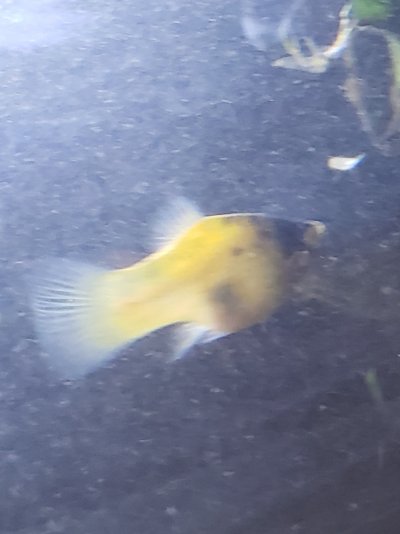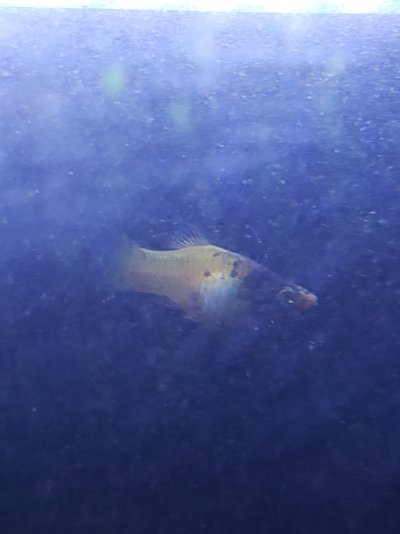Thanks, the pics came in.

The spot is definitely in the area where the fry would be developing but it doesn't really look like, to me, that there are fry developing at the moment or are advanced to the point that they would be getting ready to be born.
So here's the deal with your ammonia: at a Ph of over 7.0, ammonia is toxic to the fish. At a Ph below 7.0, ammonia is converted to ammonium which is not toxic to the fish unless in extremely high levels. So the ammonia in your tank is ammonium at the moment because your Ph is under 7.0. That's the good news. The bad news is that ammonium and ammonia are both converted into nitrites and they are toxic to the fish at lower levels so you really want to address this. I suggest using a product like Seachems PRIME or SAFE to treat your source water before adding it to the tank. ( I'll get to what to do with the nitrites in your tank in a minute)
The " cycle" in short is the creation of a natural bacteria bed that consists of 2 species of bacteria where 1 will convert ammonia/ium to nitrites and the other to convert nitrites to nitrates. There are products on the market that add the bacteria to your water if you don't want to wait to have it happen naturally. Once the bacteria bed is established, the tank is considered " cycled" because unless you add too much food or too many fish to fast or add any other ammonia source, you should not see any readings of ammonia or nitrites when you test. Only nitrates. Because you are reading nitrites, I have to think that your tank is not cycled yet. Once you see a consistent 0 reading of ammonia and nitrite, you should be fully cycled.
On a side note, just for your information, the bacteria bed should be considered a living breathing organism which grows and shrinks to it's food source. So say you have a tank with 10 platies and you are showing no ammonia or nitrites, your bacteria bed has grown to the point that it can handle the ammonia output of those 10 fish. But you decide to get rid of 8 of those platies without replacing them with anything else. Now your bacteria bed will shrink over the course of some time because there is less food for it to feed on. Now say 6 months +/- has gone by and you decide to replace those 8 Platies again so you add them all at the same time because your tank held them fine before. Your bacteria bed now tho is probably not large enough anymore to handle that much new bioload all at once and you will see a spike in ammonia again. People call this a "second cycle" or " mini cycle" because the bacteria bed has to grow to catch up with the available food. You want to try and avoid this since if your water was at a Ph of over 7.0, that ammonia in there is toxic and will be stressing your fish. The good news is that bacteria beds grow rapidly so this new" cycling" should not take as long as the original cycling did. ( Science class, right?? LOL ) So you want to add fish slowly when the tank is newish so as not to overwhelm the bacteria bed.
Back to your water: I would be doing more water changes to help dilute that nitrite and nitrate and raise your Ph. Since that 25% water change raised the Ph .4 and that is about the limit you should change a Ph at a time, I'd do a 20% change then treat the whole tank with PRIME or SAFE to detoxify the nitrites while you are diluting them and your bacteria bed is catching up. I'd do this every 2 days ( that's about the limit of PRIME's effectiveness) until the Ph is back up to the mid 7s or up to 8s that your tap is. DO NOT ADD MORE FISH or other ammonia sources until your tank finishes cycling. Also, hold off on the crushed coral until your Ph situation is resolved as well. After then, you can use it as a way to stop the Ph from falling but to do it now might( probably) cause the Ph to rise too much too fast. ( More science class stuff.

)
Hope this helps

Class dismissed.









 )
) 
 Keep asking questions.
Keep asking questions.